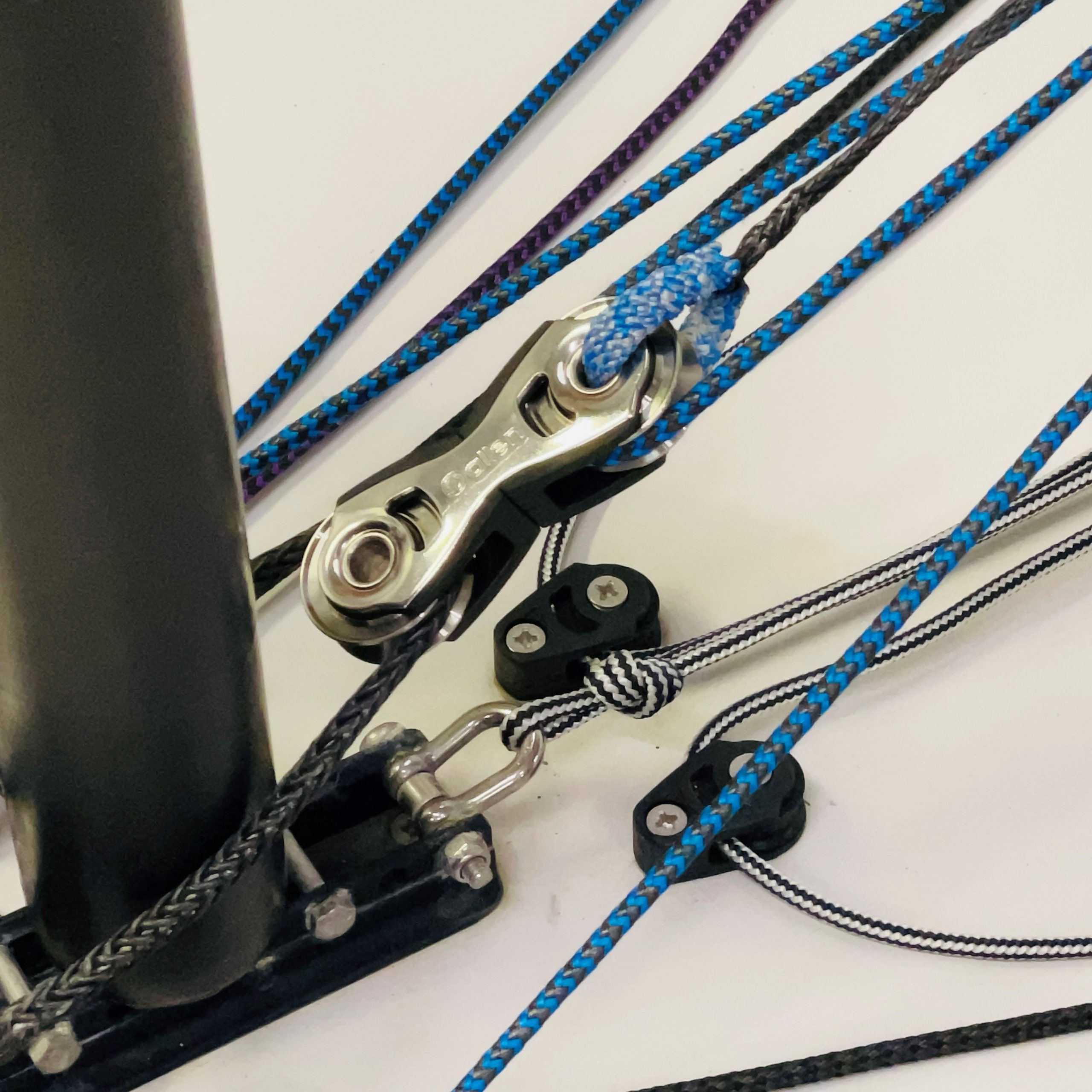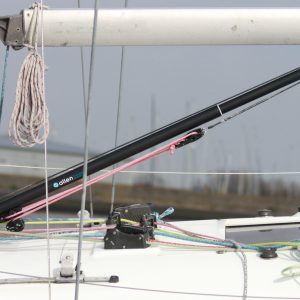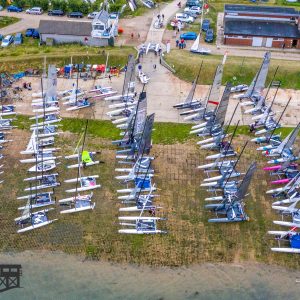Back to Back Block – Product Feature

The back to back block is an interesting product and one that a lot of sailors might not understand how to properly use in a system. In this short article, we will explain the applications of this extremely useful block and how it improved the reliability of a Vang strop.
Jump to
Back to back in a Vang system.
Firstly, what is a back to back block?
Our back to back blocks feature two sheaves, both with our patented dynamic bearing technology. The sheaves face opposite directions to allow two control lines to run at a maximum of 180 degrees to each other. Held together with strong stainless steel side straps and nylon mouldings ensures the block will not separate even under two very high opposing loads.
How can a back to back block be applied to a system?
There are plenty of very useful ways to use a back to back block, however it was originally developed for use in a very specific control system. Modern asymmetric dinghies can often feature a “one-string” system, in which by hoisting the spinnaker halyard the pole is also extended and set. When this system was first developed blocks were simply shackled together, which wasn’t pretty and also created an area for snagging rope or sails. So, the back to back block was developed to streamline, lighten and improve the shackled together option.
As time has gone by the back to back block has also found its way into many other control line take-up systems.
It has also proved a good option for triangular backstay systems on boats. The slight V shape allows another block to be tied around the middle to create the additional purchase needed.
Back to back block in a Vang system
There are many high-performance dinghies that feature a Dyneema strop around the base of the mast. The strop acts as a fixing point for the Vang and is usually seen on boats that have a deck-stepped mast. The deck-stepped mast creates problems for establishing a reliable and strong Vang fixing point due to the loads and angles. The Dyneema strop is one of the solutions.
There are many ways to attach the adjustable part of the Vang to the Dyneema strop. Whether it is by a hook, shackle or high load thimble.
However, all of these options will rub and wear down the strop every time the boat tacks, gybes or the mainsail is adjusted. This results in the sailor having to do regular checks and changes of the Dyneema strop to ensure a failure does not occur. After all, the vang is one of the most highly loaded points on the boat, so wear is common.
But, by changing the high load thimble or shackle to a back to back block you can almost eliminate the chances of wear to the strop.
How does it eliminate the wear?
Just watch the following two videos and you can see for yourself the difference.
The high load thimble, although low friction, still rubs and slowly wears down the strop over time.
In comparison, the back to back block sheave rotates across the strop. Resulting in very little rub or wear.
The end result is now a vang system that will run more smoothly through tacks and gybes as well as pose much less of a risk to wear and tear on the Dyneema strop. So less maintenance and more time spent sailing!
Back to back block range details
The back to back block range is available in both 20mm and 30mm sheave sizes as well as with high load stainless steel sheaves or the standard nylon dynamic sheaves.
| SKU | Title | Sheave size mm | Breaking load kg | Length mm | Maximum line diameter mm | Maximum working load kg | Weight g |
| A2028 | Back To Back | 20 | 540 | 52 | 6 | 115 | 20 |
| A2028HL | Back To Back High Load | 20 | 540 | 52 | 6 | 300 | 32 |
| A2038 | Back To Back | 30 | 750 | 78 | 8 | 140 | 49 |
| A2038HL | High Load Back To Back | 30 | 750 | 78 | 8 | 600 | 76 |
We hope you found this article useful. To find out more information about any of the products on this page, or to use this article in your own marketing, please contact marketing@allenbrothers.co.uk










